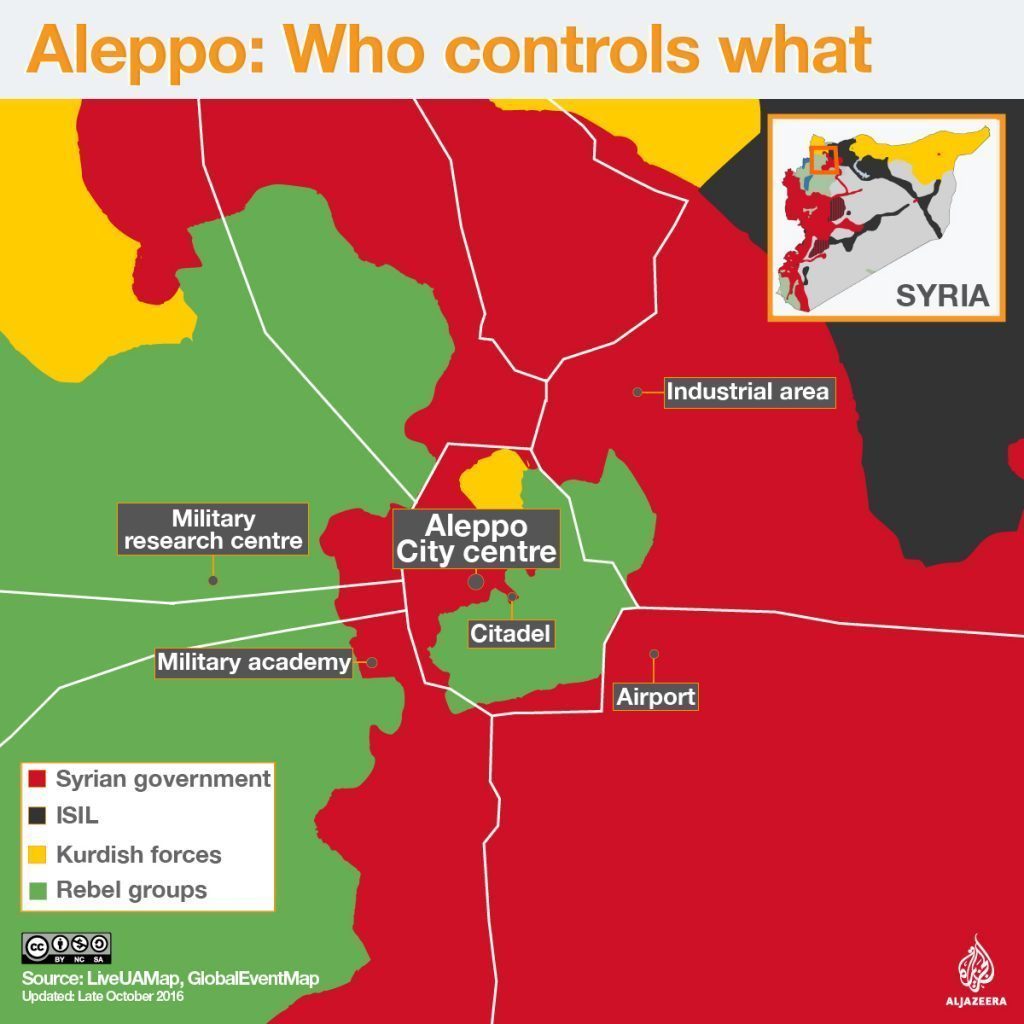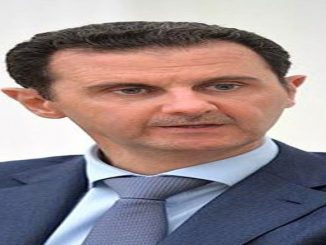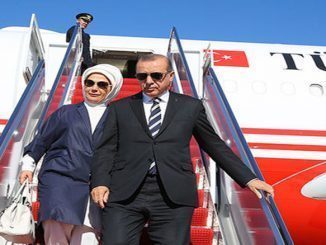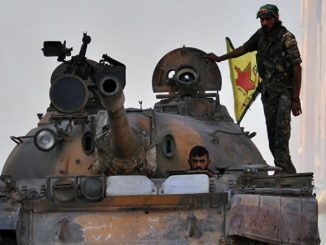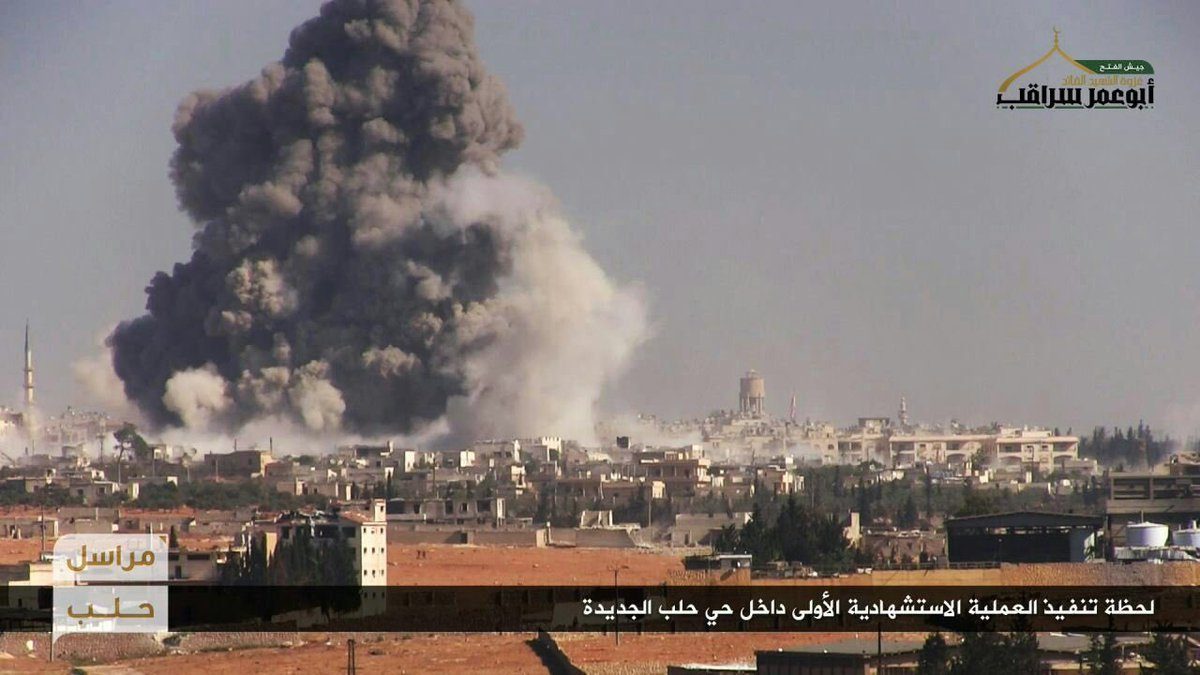
Syrian rebels stepped up a week-long offensive on government-held areas in the city of Aleppo on Thursday, detonating three car bombs and firing dozens of shells, in a challenge to the Russian army that gave them a chance on Friday to end the battle and leave the city.
On Friday 29 October the rebel forces started a new military operation to break the siege imposed on 275.000 civilians in eastern Aleppo, employing heavy shelling and suicide car bombs, was mainly focused on the city’s western edge by rebels based in the countryside outside Aleppo.
It included Jabhat Fateh al-Sham, a former affiliate of al Qaeda previously known as the Nusra Front, and groups fighting under the Free Syrian Army (FSA) banner.
On Thursday, rebel groups detonated three large car bombs near pro-government forces on the western edge of Aleppo, the Syrian Observatory for Human Rights and rebels said, as they tried to revitalize an offensive which has made little progress since taking most of Dahiyet al-Assad suburb on last Friday.
Syrian state media said on Thursday 12 people were killed and around 200 injured by the rebel shelling on government-held western Aleppo. The Syrian Observatory for Human Rights said at least 15 civilians, including four children, had been killed in west Aleppo and around 120 injured.
Zaher Hajo, the head of forensic medicine in government-held Aleppo who reported the eight patients suffering respiratory difficulties, said the medical authorities could not determine the nature of the gas believed to have been used. This could not be independently confirmed.
All parties in the multifaceted Syrian conflict have accused each other of using chemical weapons during more than six years of conflict.
On Sunday Syrian state media said militants fired poison gas at a government-held area of Aleppo, causing 35 people to choke, a report that a rebel official denied.
In the first three days of the offensive at least 41 civilians, including 16 children, were killed according to the Syrian Observatory for Human Rights.
Rebel suicide-bombers opened up a new offensive on #Aleppo. City being shelled mercilessly.
We were on the front lines. Lucky to be alive pic.twitter.com/F4U7JhmanU
— Murad Gazdiev (@MuradGazdiev) November 3, 2016
Mass panic in West #Aleppo. We filmed men, women, children brave relentless shelling to escape rebel onslaught. Dozens in hospitals. pic.twitter.com/ZLpR9U52TL
— Murad Gazdiev (@MuradGazdiev) November 3, 2016
Video show the first car Bomb that targeted #Assad locations in the #New_Aleppo neighborhood in west of #Aleppo pic.twitter.com/v9YU7feA7t
— Ahmad Alkhatib (@AhmadAlkhtiib) November 3, 2016
Video ahow part of the shillings that targeted the #Assad forces in the west of #Aleppo by @J_F_Sham pic.twitter.com/h9FGS4wcnL
— Ahmad Alkhatib (@AhmadAlkhtiib) November 3, 2016
Fighters of @J_F_Sham preparing for the battle of #Aleppo, which just started pic.twitter.com/NPypKEQUoa
— Ahmad Alkhatib (@AhmadAlkhtiib) November 3, 2016
Russin threat
Russia on Wednesday told rebels in Syria’s Aleppo to leave by Friday evening saying it has offered a new humanitarian pause in the city.
Russia’s defence ministry said Putin ordered that the aid corridors – which Russia had opened earlier – will also be open on Friday, for longer hours, from 9am to 7pm, along with two new exit routes for the fighters to leave eastern Aleppo.
President Vladimir Putin had ordered the pause in fighting “to avoid senseless victims,” the Defence Ministry said, saying that Syrian authorities would ensure that Syrian troops pulled back from the two corridors designated for rebels.
The Russian Defence Ministry said on Wednesday that rebels inside Aleppo had taken heavy losses during fighting and were effectively trapped.
“All attempts by the rebels to break through in Aleppo have failed,” the ministry said. “The terrorists have suffered heavy losses in lives, weapons and equipment. They have no chance to break out of the city.”
However, Russian warned sunset there will be a bombardment that will level what remains of east Aleppo. As the deadline drew near, rebel groups said they had little to fear, refused the offer and stepped up their offensive.
A group of Russian naval power, including Russia’s only aircraft carrier, moved into their final positions in the eastern Mediterranean expected to take part in the upcoming attack.
Russian and Syrian officials have claimed that the remaining civilian population of east Aleppo are being prevented from leaving by militants. Rebels have rejected the claim, as well as an allegation that hospitals systematically targeted by Russian and Syrian jets were used to store weapons.
Pictures fro the first and the second car Bombs that targeted the most two important #Assad HQ in #New_Aleppo pic.twitter.com/USkZH0OzfX
— Ahmad Alkhatib (@AhmadAlkhtiib) November 3, 2016
The fighters of #Army_of_conquest moving toward the #Assad locations in #New_Aleppo neighborhood pic.twitter.com/oCpHGN2FTq
— Ahmad Alkhatib (@AhmadAlkhtiib) November 3, 2016
What Aleppo residents think?
Residents in the rebel-held parts of Aleppo didn’t seem also to be caring about the Russian threat, while others said they prefer to leave the city.
“In a normal situation people would be concerned by it,” said Wissam Zaraq, a teacher in the east of the city. “But right now they’re concerned about breaking the siege since the living situation and lack of supplies is so bad. I haven’t seen a single building that hasn’t been damaged in the bombardment, or a street that hasn’t been blocked by the collapse of buildings. People no longer pay attention to it.”
Mohamed al-Ahmad, 29, a shopkeeper from Aleppo’s old city, said: “Russia is already bombing us. This doesn’t make us scared. It won’t be that different for us if they increase their attacks.” He said he and others would risk death or arrest if they left, but had nothing to fear from opposition groups.
“The situation is very difficult. There is no way to get out of Aleppo. Before the battle started, there was a way, but the problem is that you cross to a [Kurdish] area, and need to pay them to go to the Syrian regime-controlled area. If you have a security problem with the Syrian regime, you risk being arrested.”
Sharif al-Halabi, a spokesman for Fastaqim, one of the main rebel factions inside east Aleppo, said: “The Russians said they’re opening these corridors and the regime is advertising that it’s evacuating civilians, which is totally untrue and is simply a game they’re playing. There are no civilians who are leaving, and there aren’t even any corridors.
A doctor who had treated casualties in one of Aleppo’s three functioning hospitals – and who was himself recently injured in an airstrike – said claims that weapons were being stored in medical centres were false.
“They know the truth completely, but they are closing their eyes to it and lying and lying and lying until they are believed,” he said.
The Battle for Aleppo
The Assad regime forces, backed by Russian air power, Iranian ground forces and Shi’ite militia fighters from Iran, Iraq, and Lebanon, has been tightening its grip on rebel-held districts of Aleppo this year, and this summer achieved a long-held goal of fully encircling the area.
Rebels opened a corridor to the east for the month of August after pro-government forces first applied a blockade in July, but they were not able to hold it as the government and its Russian ally pounded the gap with artillery and airstrikes. Pro-government forces reapplied the siege in early September.
Assad regime, backed by Russia, said on September 22 it was starting a new wide offensive to recapture the rebel-held parts of Aleppo after a week-long ceasefire was declared officially over on 19 September.
There are about 275,000 people trapped by the siege of eastern Aleppo, where civilians are suffering through daily bombing, including by bunker-buster and incendiary weapons, and through starvation, as limited supplies run out and aid convoys are blocked from the city.
On Friday 29 October the rebel forces started a new military operation, employing heavy shelling and suicide car bombs, was mainly focused on the city’s western edge by rebels based in the countryside outside Aleppo.
In the first three days of the operations the rebels were able to advance and seize new areas and their shelling on the regime-held areas killed 46 civlians at least including children.
However, the rebels’ attack was repelled in many fronts be Assad regime’s forces and the battles have slowed down after the fourth day.
The area has been subjected to a ferocious campaign of aerial attacks by Russian and Syrian government warplanes, and hundreds of people have been killed in recent weeks, according to opposition activists and trapped residents.
Recovering full control of the rebels’ last significant urban area would be the most important victory of the war so far for Assad, strengthening his control over Syria’s most populous and strategically important regions.

